DeKay’s Brown Snake (Storeria dekayi)
Alternate names: DeKay’s Brownsnake, Brownsnake, DeKay’s Snake, Brown Snake
by Jeff LeClere
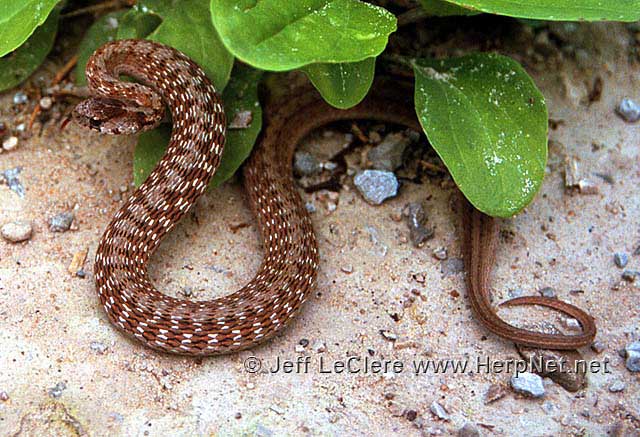
Status
PROTECTED. It is illegal to kill or collect this species by law in Iowa. DeKay’s brown snakes are common in Iowa.
Description
Harmless to humans. This is a small Iowa species measuring 13 – 18 inches long (Conant and Collins, 1991). The ground color on the back is a varying shade of brown or gray. There is a light stripe that runs down the back. A row of black spots borders the stripe on both sides. The head is sometimes unmarked, but it usually has at least one (if not all) of the following: an upside down black V under the eye that stops at the mouth line, a large, black semi-ring on the side of the nape sometimes extending onto the belly scales.
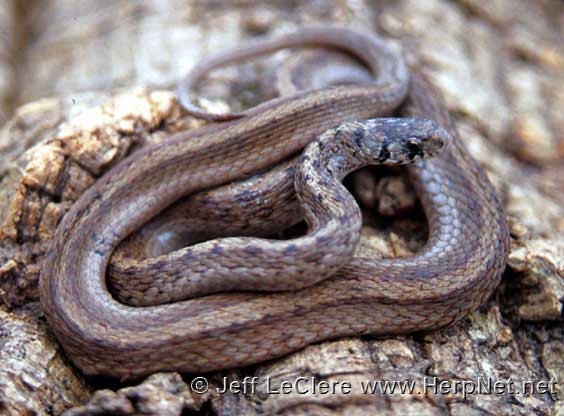
There may be white pigment in between the scales when the skin is stretched. The belly is unmarked except for a row of black spots where the ventral scales meet the dorsal scales. Belly coloration may be cream, pinkish or yellowish. The scales are keeled and the anal plate is divided.
Subspecies
No subspecies are currently recognized. Formerly two subspecies were listed in Iowa, the Texas brown snake, Storeria dekayi texana, and the midland brown snake, Storeria dekayi wrightorum.
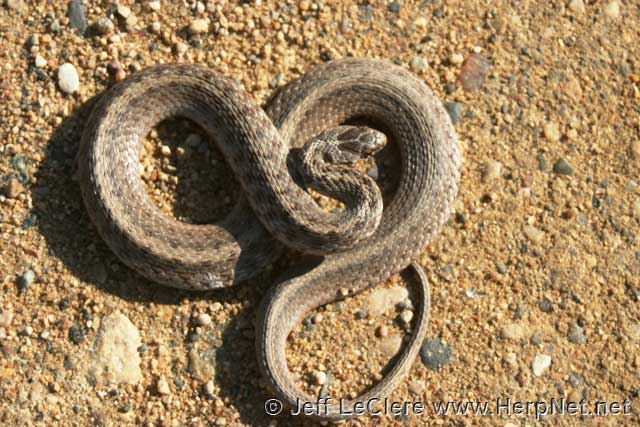
Range
The DeKay’s brown snake is found in all of Iowa but the northwestern third.
Habitat
These snakes are mostly found around water; bogs, marshes, streams, ponds, and lakes although they are usually found quite some distance from the waters edge. Open grasslands with woodland borders are favored. I often find brown snakes in association with river valleys in Iowa. DeKay’s brown snakes hide under rocks, logs, and other cover. I once found a gravid female under a piece of tin lying in the mud on the shore of Lake Waconia in Carver County, Minnesota.
These snakes are extremely adaptable to environmental changes and are frequently found in city parks, city lots, cemeteries, and backyards.
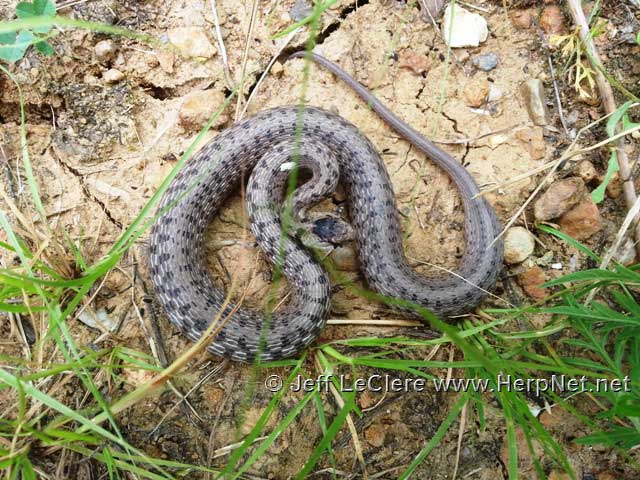
Habits
This snake is called the Dekay’s brown snake after New York naturalist James Edward DeKay, (Conant and Collins, 1991). They may be found by turning flat trash. They are generally diurnal, but I have found them at night during hot weather. These snakes vary in temperament. Most of the specimens I have encountered have been very mild mannered and made no attempt to bite. A few others, however, have flattened themselves out like a ribbon. This stretches the scales apart and the underlying skin color may produce white dashes on the sides. Rarely they strike viciously and musk, but their bite is harmless and painless.
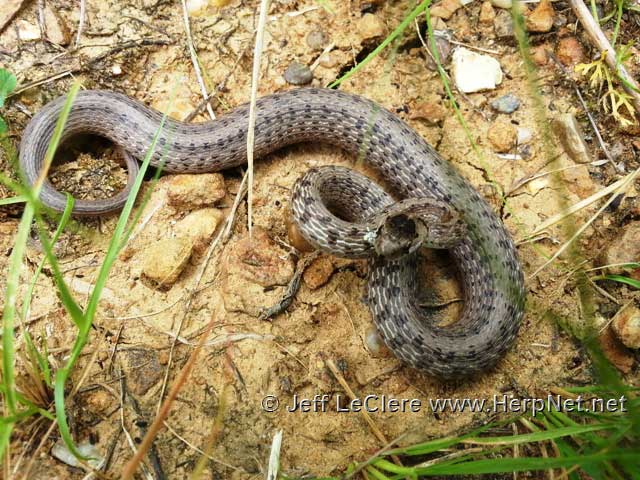
They breed in spring and give birth to 3 – 20 living young at a time. They are about four inches at birth and are nearly black with dark spots and a light collar around the neck. DeKay’s brown snakes overwinter in rock crevices, road embankments, and in bridges. Large numbers of brown snakes can be seen crossing roads while migrating to their hibernacula in October.
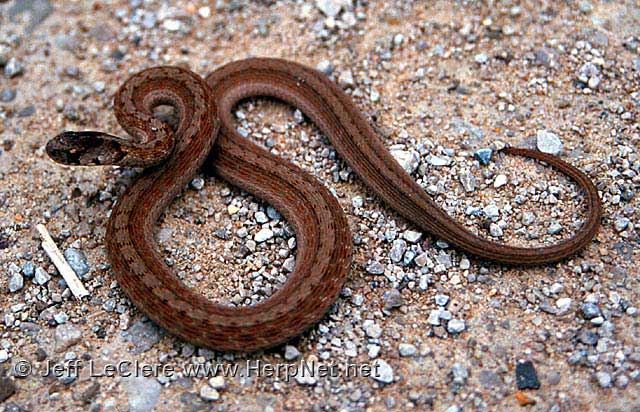
Food
DeKay’s brown snakes eat earthworms, slugs, snails, soft-bodied insects and larger specimens will eat frogs and tadpoles.